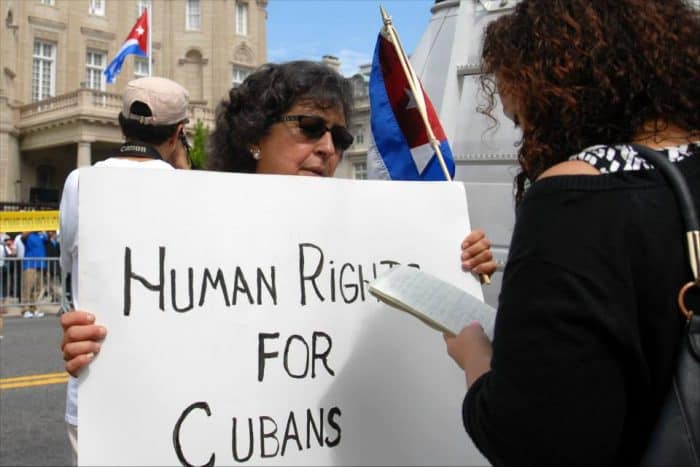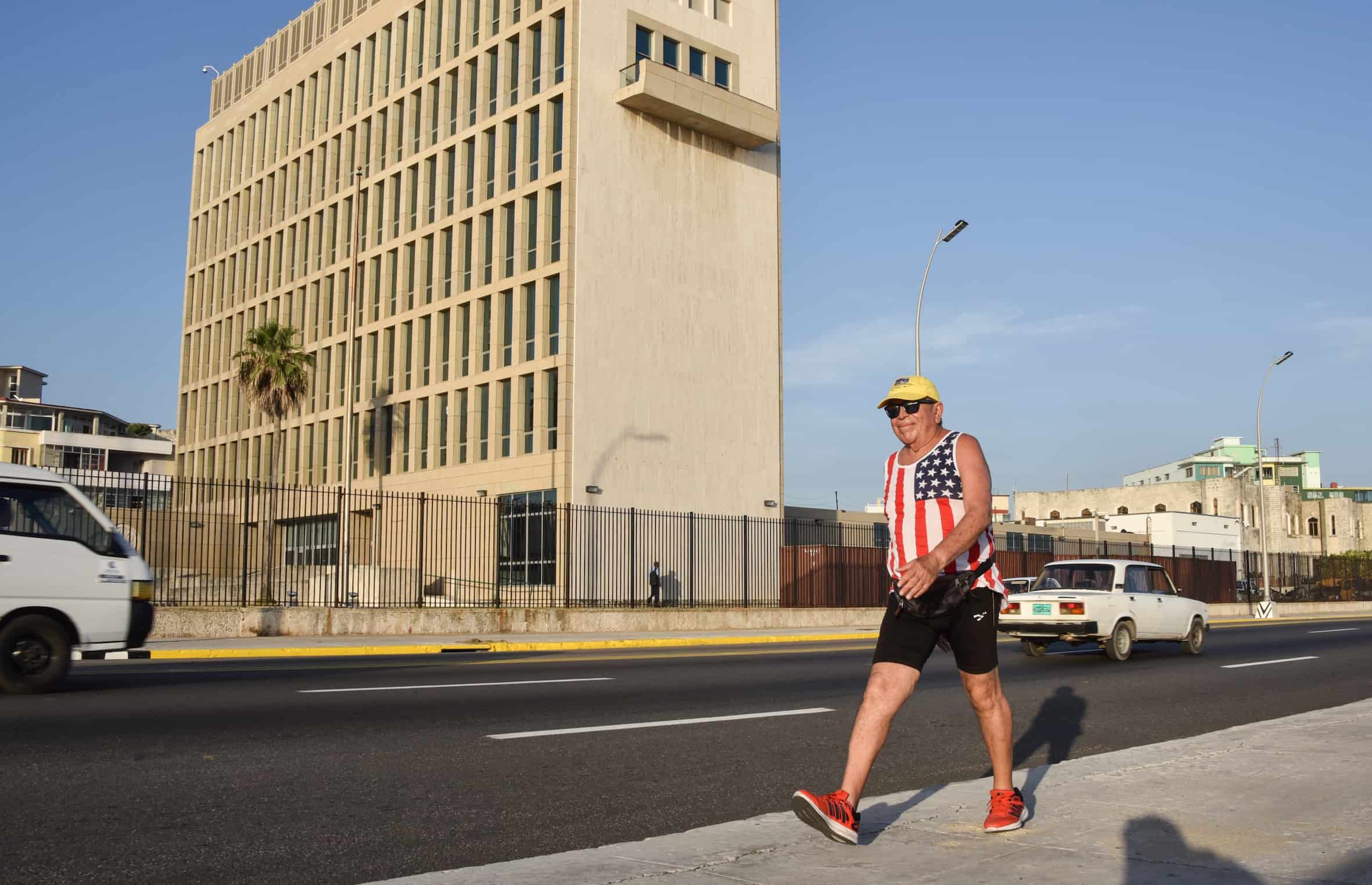HAVANA, Cuba — When Secretary of State John F. Kerry arrives here Friday for a ceremony to raise the Stars and Stripes once more at the U.S. Embassy in Cuba, he’ll be the highest-ranking American official to set foot on the island in more than half a century.
His demeanor could matter as much as his remarks. Will he maintain the all-business approach that U.S. diplomats typically project here? Or will he treat the occasion as a celebration, signaling perhaps that it’s OK to have fun in Cuba again?
It’s not an abstract question. The Obama administration’s decision to restore diplomatic relations with Cuba is banked on the belief that the United States can do more to encourage change on the island through a soft-power strategy of “engagement.” And a big part of that, in Cuba, means figuring out how to change the profile of U.S. diplomacy — and throw a good party again.
Havana’s festive atmosphere has long befuddled visiting American politicians fearful they could be accused of disporting themselves inappropriately in a repressive environment. Now it’s up to American officials to drop their guard a bit in the hopes that Cuba will do the same, and that engagement will win new U.S. influence.
During the 38 years that the U.S. mission here operated as a downgraded “interests section,” American officials hosted many of the types of events that they do elsewhere: Fourth of July receptions, dinners for visiting VIPs and special-invitation parties to watch the Super Bowl or presidential debates. The palatial 35,000-square-foot residence in Havana’s former “Country Club” district has a reputation for good brownies — but parties that rarely last beyond 9 p.m.
With a few exceptions, though, Cuban officials have never been allowed by their own government to attend.
See all The Tico Times’ Cuba coverage
Cuba’s boycott only hardened as the United States began inviting government opponents to the receptions. It’s only been at times of improving ties — like the current thaw — that a few Cuban artists, musicians and others have started showing up again, mingling with American officials and dissident activists over mojitos and light jazz.
Friday’s flag-raising ceremony put U.S. diplomats in the same knot. According to the Associated Press, Cuban dissidents will not be invited to attend the embassy event Friday morning with Kerry, a sign of the degree to which American officials are shifting their attention to conventional diplomatic efforts with the Cuban government. Instead, the activists will be invited to a separate, quieter flag-raising ceremony Friday afternoon at the U.S. diplomatic residence.
“It’s a very difficult dilemma” for the United States, said Carlos Alzugaray, a former Cuban ambassador to the European Union who maintains close ties to top Cuban officials and U.S. diplomats.
“One of the reasons that the U.S. has changed its approach to Cuba is the realization that government officials are going to shape what happens here next, while the dissidents will play only a marginal role,” he said.
“U.S. diplomats are interested in building better ties to Cuban officials, but they can’t do that if they don’t attend U.S. receptions.”
At the same time, Alzugaray said, Cuban officials will miss an opportunity to engage more constructively with the United States if they continue to shun U.S. events. He said Cuba should send as many officials as possible to U.S. receptions and begin to counterbalance the influence that Cuban dissidents have had in shaping American perceptions of the island’s political reality. “I say: Flood the zone,” he said.

U.S. officials say they will continue advocating for “universal values” in Cuba. But some anti-government activists say they’re being marginalized by the Obama administration’s new Cuba policy, and have started to make the U.S. president an additional target for their protests.
Over the weekend, the government arrested nearly 100 dissidents, including about 50 members of the Ladies in White group who attempted to march wearing Obama masks. The group’s leaders oppose the renewal of diplomatic relations, saying it has encouraged the Castro government to be more repressive.
European diplomats in Cuba have been trying the engagement approach for decades, of course, with mixed success.
One of Havana’s most popular figures is Norwegian Ambassador John Petter Opdahl, a patron of the arts who often opens the doors of his home for parties. The fun times have helped Oslo’s more serious endeavors here for issues like environmental protection and conflict resolution.
Norway, together with Cuba, is sponsoring negotiations between the government of Colombia and FARC rebels that have brought that country closer than ever to a peace agreement.
“One of the major reasons for success in our engagement with Cuba and Cubans is that the main theme has always been culture and not politics, and not regime change as such, which frankly is not our business to stimulate or to instigate as diplomats,” Opdahl said.
Building relationships with ordinary Cubans, and especially Cuban musicians, writers and artists, is a key part of it.
“Many of them have opinions, views, dreams — like the rest of us — about the future of Cuba, and very often they have their own way of communicating this to a much wider audience inside Cuba than, for instance, most of the traditional dissidents,” Opdahl said.
But breaking through to Cuban officials is even more difficult, especially for countries that Cuba views warily, according to Paul Webster Hare, who was British ambassador in Havana from 2001 to 2004.
“Cuban officials, unlike in most other foreign postings, do not socialize with foreigners outside office time. They never invite you to their homes and are warned not to befriend diplomats, particularly from Western countries. So they will laugh, dance and joke, but there is always something of a veil,” said Hare, who now teaches at Boston University’s Frederick S. Pardee School of Global Studies.
Hare recommends that U.S. officials use some American “flair” to propose new joint cooperation programs in sports or medical diplomacy and even invite Cubans to team up with the Peace Corps, since the program, along with the trade embargo, is a legacy of President John F. Kennedy.
“The U.S. also needs a new, smart public diplomacy with some eye-catching initiatives in areas that matter to Cuba,” he said. “By doing some of these things, the U.S. will be meeting a lot of ordinary Cubans, both communist and dissidents, and that is great for all diplomats in a foreign land.”
U.S. officials say they don’t know whether Kerry will meet Friday with Raúl Castro or his older brother Fidel, who will celebrate his 89th birthday on Thursday, the day before the U.S. ceremony.
It won’t be Kerry’s first time in Cuba. He traveled to Havana in 2000 as a senator for a meeting with Cambodia’s prime minister to discuss missing American POWs.
© 2015, The Washington Post






